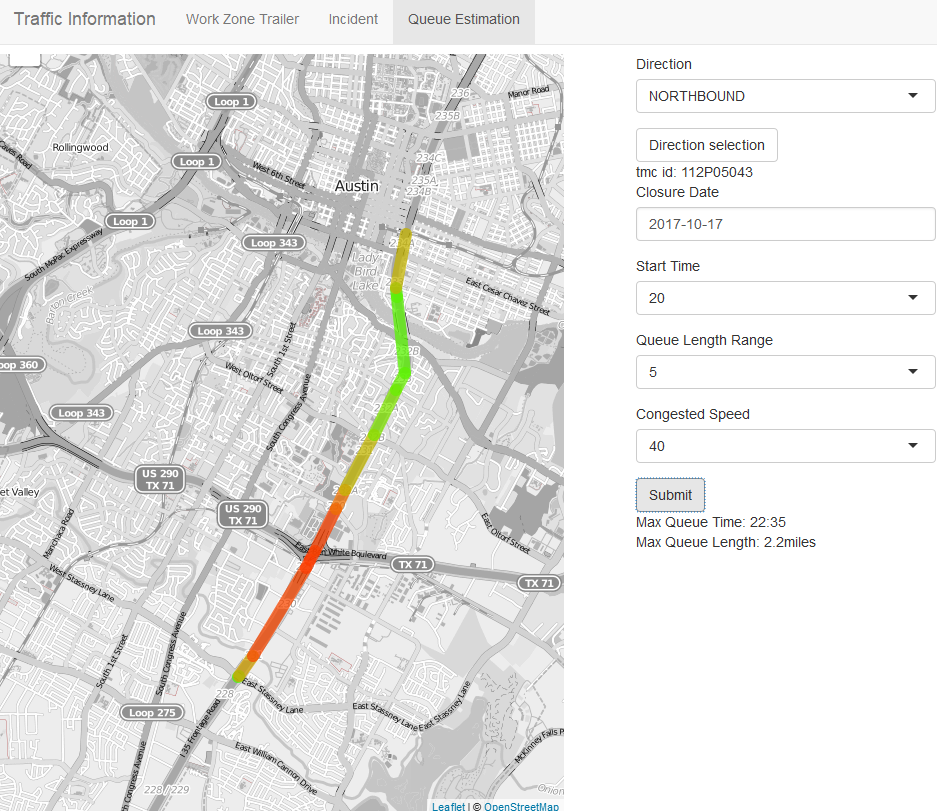
Sponsored by the Texas Department of Transportation, Austin District
While a range of analytical and modeling methodologies exist to estimate the impacts of lane closures, the direct quantification of such impacts using data is not extensively discussed. Recently, affordable sensor technology and availability of probe vehicle data have made traffic volume and speed data readily accessible. This project explores the use of probe-based speed data to understand the evolution and length of queues caused by freeway lane closures. The proposed methodology addresses some limitations related to the length of the segments for which speeds are provided, and is validated with spot-speed data from work zone trailers on the IH35 corridor in Austin, Texas.
Traffic volumes are critical in quantifying the cost of lane closures. However, volumes are often available only at limited locations or for specific time periods. CTR’s collaboration with the TxDOT Austin District presents an approach to developing a speed/flow relationship using NPMRDS and limited fixed-sensor data that may be used later to estimate traffic volumes by time of day at other locations based only on NPMRDS speeds. Numerical analyses using traffic counts on IH35 suggest that the proposed technique is accurate and that it improves upon similar methodologies that use NPMRDS data.
The methodologies presented in this paper leverage data for a precise quantification of the impact of past lane closures, which can enable more accurate cost-benefit analyses and facilitate communications with stakeholders. It also provides better reference data to validate/calibrate prediction models and offers a more accurate estimation of queue positions to support work zone management decisions.
Research papers related to the Lane User Delay Cost effort include:
